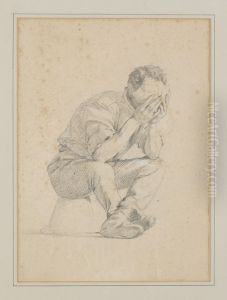Carlo Abbati Paintings
Carlo Abbati was an Italian artist, known primarily for his contributions to the fields of painting and printmaking. Born in Milan in 1893, Abbati lived through a period of significant artistic evolution in Italy, from the tail end of the 19th century through the dynamic shifts of the early to mid-20th century. Despite the lack of widespread recognition compared to his contemporaries, Abbati's work remains an intriguing footnote in the history of Italian art, reflecting the broader movements and undercurrents of his time.
During his early years, Abbati was influenced by the prevailing styles of Art Nouveau and Symbolism, which were dominant in Europe. However, as the 20th century progressed, his style evolved, showing an increasing interest in the burgeoning modernist movements such as Futurism, which was particularly strong in Italy, and later, elements of Expressionism and Cubism. This eclectic mix of influences is evident in his work, which often experimented with form, color, and technique, straddling traditional and modernist sensibilities.
Abbati's career was not limited to painting; he was also an accomplished printmaker, and his etchings and lithographs are notable for their technical skill and artistic experimentation. These works often explored themes of urbanism, technology, and the human condition, mirroring the complex changes Italy was undergoing during this period.
Despite his artistic achievements, Carlo Abbati remained relatively obscure in the broader panorama of Italian art. His death in 1952 marked the end of a career that, while not as celebrated as some of his peers, contributed a unique voice to the Italian Modernist movement. Today, his works are preserved in several Italian museums, and they offer a fascinating glimpse into the diverse artistic explorations of early 20th-century Italy, embodying the spirit of an era that sought to redefine the boundaries of art and culture.
